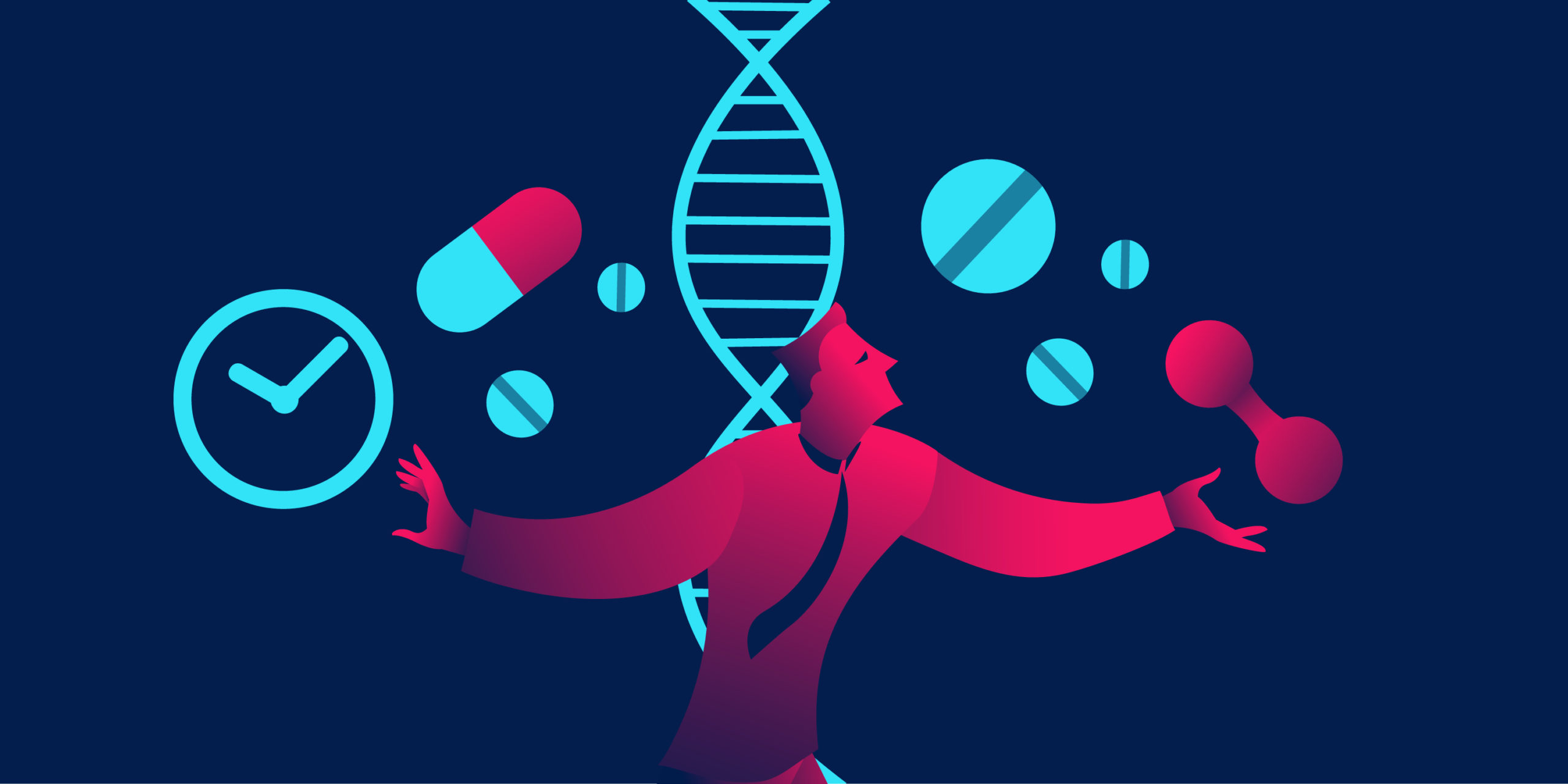
Rapamycin, the most promising life extension drug
April 11th, 2023By Dr. Ross Pelton
Ross Pelton, R.Ph., Ph.D., CCN is a pharmacist, a Certified Clinical Nutritionist (CCN) and has a Ph.D. in psychology. In October 1999, Ross was named one of the Top-50 Most Influential Pharmacists in America by American Druggist magazine for his work in natural medicine. Known as the ‘Natural Pharmacist’ his personal website is www.naturalpharmacist.net Ross has written twelve books. His most recent book is Rapamycin, mTOR, Autophagy & Treating mTOR Syndrome.
The second half of life should be a time to enjoy our accumulated wisdom, our professional skills, and the aging process. However, during the second half of life, the process of biological aging accelerates. Unfortunately, many people experience a significant loss of mobility and functionality along with a steady increase in pain and suffering due to the progression of age-related disease.
Biological and chronological aging do not necessarily happen at the same rate. However, many people don’t realize that today we have a great deal of personal control over our health and our aging process. My new book titled; Rapamycin, mTOR, Autophagy & Treating mTOR Syndrome I present a revolutionary breakthrough in our ability to slow down biological aging and extend healthspan.
Figure one: Dr. Ross Pelton’s latest book.
Two important themes have emerged from the research into Rapamycin’s mechanisms of action.
- Theme 1
Is the story of Rapamycin and its ability to delay the onset of age-related diseases, which results in increases in healthspan and lifespan.
- Theme 2
Is the story of mTOR and autophagy, a fundamental process in cells that regulates metabolism, health, and the aging process. This discovery is ushering in a revolution in the science of life extension.
The Rapamycin Story
Rapamycin is the most successful life extension drug that has ever been discovered. Rapamycin treatment has increased lifespan from 25-60% in most species it has been tested on.[1] When Rapamycin was given to 20-month (elderly) mice, females lived 14% longer and males lived 9% longer.[2] This is equal to an increase of approximately 7 years in human lifespan. These are exciting results because they suggest that Rapamycin started late in life may also improve health and extend lifespan in elderly humans.
A scientific expedition to Easter Island in 1964 was undertaken to look for antifungal and/or antibiotic compounds in the soil – this is where Rapamycin was discovered. One of the soil samples from that expedition contained a strain of bacteria that produced a compound that scientists named Rapamycin. The name Rapamycin was chosen because Rapa Nui is the name the indigenous people called their island.
Rapamycin exhibited strong antifungal properties from the start, but it was also discovered to have strong immunosuppressive activity, so efforts to develop it as the primary ingredient for antifungal drugs were discontinued in favor of its immunosuppressive properties.
Rapamycin’s ability to suppress the immune system resulted in it gaining FDA approval in September 1999 as a drug to prevent organ rejection in patients who had received a kidney transplant.[3] Since 1999, rapamycin has been taken safely by millions of people.
Rapamycin’s Mechanism of Action
Several scientists independently discovered different aspects of Rapamycin’s mechanism of action.[4] Rapamycin binds with intracellular protein, inhibiting its function when it crosses cellular membranes and enters the cells. In 1994, David Sabatini succeeded in isolating and identifying this protein, which is now referred to as the mechanistic target of Rapamycin (mTOR).[5]
Figure two: A slide from the Age Reversal Network PowerPoint presentation, by kind permission of Bill Faloon.
mTOR’s Function
mTOR regulates a signaling pathway that is activated when nutrients are available to cells. This signalling pathway activates cellular metabolism, which means it tells the body cells to use these nutrients for building new proteins, cellular components and enzymes. This is classed as activating cellular anabolic processes of cell growth and proliferation. VThe discovery of mTOR has resulted in new understanding of cellular metabolism, health, and the aging process. Now, 25 years after its discovery, over 11,000 papers have been published on mTOR.
Autophagy
In 2016, Japanese scientist Yoshinori Ohsumi was awarded the Nobel Prize in physiology and medicine for discovering the cellular mechanism named autophagy.[6] The term autophagy comes from the Greek words ‘phagy’ meaning to eat, and auto which means self. Autophagy is a process within all cells that counterbalances mTOR’s activities. When mTOR is not activated, autophagy is switched on.
Autophagy is the process by which damaged proteins, enzymes, and other older cellular components are selectively broken down for reuse or elimination. Terms that describe autophagy’s function include cellular renewal, revitalization, recycling, and detoxification.
Currently PubMed contains over 30,000 citations with the term autophagy in the title, which is an indication autophagy’s scientific importance.
The mTOR/ Autophagy Ratio
Humans have existed on earth for 2-3 million years. Throughout 99.9% of mankind’s history, people had to hunt or forage for their food every day. Our hunter-gather ancestors did not eat 3 meals a day and their bodies were well-adapted to periods of not eating. In fact, our biochemistry developed the ability to store fat, which is a triumph that enabled our ancestors to survive during times when food was scarce.
However, the following relatively recent innovations played a major role in changing how much people eat, and how often people eat: a) advances in agriculture & farming, b) the advent of refrigeration and the invention of household refrigerators, and c) advances in food processing and packaging. These innovations have made food easily available all the time.
mTOR Syndrome
Breakfast is not normal. Throughout most of mankind’s evolution, people did not eat breakfast. The idea of eating breakfast started with the industrial revolution in the 1600s, when large numbers of people moved off the land and began living in cities and working in factories. Most of us grew up being told that “breakfast is the most important meal of the day.” This is just a marketing slogan created in 1944 by John Kellogg to sell more Kellogg’s Corn Flakes cereal!
Because food is easily available 24/7 these days, modern humans spend far more time consuming and digesting food compared to our ancient ancestors. Many people have breakfast, lunch, dinner, between-meal snacks, dessert, and evening cocktails. Consequently, modern humans spend about 16 hours per day consuming and digesting food, compared to our ancient ancestors who often ate only once per day and spent about 4 hours digesting their food. This results in the constant overexpression of mTOR and a severe deficiency in the activation of autophagy.
I call this imbalance mTOR Syndrome.
When cells are constantly receiving mTOR’s growth signals, they eventually become stressed and various cellular components become damaged because autophagy’s recycling, rejuvenation, detoxification, and renewal processes are not being activated.
Rebalancing the mTOR/Autophagy Ratio
The overexpression of mTOR (mTOR Syndrome) and the corresponding under expression of autophagy is increasingly being recognized as a fundamental mechanism underlying the onset of some of our most common age-related diseases.[7]
Intermittent Fasting or Time-Restricted Eating
The most important method to correct the out-of-balance mTOR/autophagy ratio that exists in most people, is intermittent fasting or time-restricted eating. These programs don’t limit what you eat or how much you eat, they limit WHEN you eat. The goal is to consume all your daily food/caloric intake in a shorter period, which allows more time for the activation of autophagy.
There are numerous ways to accomplish intermittent fasting or time-restricted eating. The 16:8 protocol is the most popular regime where food is consumed within an 8-hour period (noon to 8 PM). This leaves 16 hours without food intake, which allows autophagy to be activated. However, many people probably don’t have the discipline for intermittent fasting.
Rapamycin to the Rescue
When Rapamycin is ingested, it enters cells and binds to mTOR receptors, which inhibits mTOR signaling. Taking Rapamycin daily suppresses the immune system, which is NOT the goal. However, when Rapamycin is taken once weekly, it partially inhibits mTOR, which allows autophagy to be activated.
The health benefits of taking Rapamycin once weekly were documented in a study titled mTOR inhibition improves immune function in the elderly, which was conducted by Joan Mannick, M.D. In this human clinical trial, people who took 5 mg of Rapamycin once weekly gained a significant boost in their immune system (complete details of the study are reviewed in my book).[8]
Important New Rapamycin Study
Long-lived animals are known to have genes in common that negatively and positively affect lifespan. Dr. Vera Gorbunova, who is Co-Director of the Rochester Aging Research Center, examined Rapamycin and 9 other prominent life extension therapies in mice and assessed how each intervention affected the genes associated with maximum lifespan.[9]
Rapamycin wins!
Dr. Gorbunova’s study revealed that Rapamycin had the greatest effect on promoting the activity of genes that have a positive effect on maximum lifespan and Rapamycin also had the greatest effect in reducing the activity of genes that have a negative effect on maximum lifespan. This study confirms that Rapamycin is a drug that is ushering in a revolution in the ability to increase lifespan and healthspan.
My book also discusses how to monitor Rapamycin therapy, what side effects to be aware of, suggestions on how to get your physician to write a Rapamycin prescription for you, links to key scientific studies, podcasts and interview with Rapamycin scientists, a chapter on Metformin, and a review of non-prescription mTOR inhibitors.
If you read my book, I hope you will write and post a review as lots of little comments make a big difference. I think Rapamycin can significantly improve the health of most people alive today, except individuals who are already on life support or in hospice.
Also, after reading Rapamycin, mTOR, Autophagy & Treating mTOR Syndrome, please encourage your family and friends to read it. Let’s make good health go viral!
References
[1] Selvarani R, et al. Effect of rapamycin on aging and age-related diseases-past and future. GeroScience. 2021 Jun;43(3):1135-1158.
[2] Harrison DE, at el. Rapamycin fed late in life extends lifespan in genetically heterogeneous mice. Nature. 8 Jul 2009;460: 392-395.
[3] https://www.accessdata.fda.gov/drugsatfda_docs/nda/99/21083A_Rapamune_appltr.pdf
[4] A long and winding sTORy. Nat Cell Biol. 2017 Oct 1;19 (1131). https://www.nature.com/articles/ncb3624
[5] Sabatini D, et al RAFT1: a mammalian protein that binds to FKBP12 in a rapamycin-dependent fashion and is homologous to yeast TORS. Cell. 1994 Jul 15;78(1):35-43.
[6] Press Release: 2016 Nobel Prize in Physiology or Medicine. https://www.nobelprize.org/prizes/medicine/2016/press-release/
[7] Klionsky D, et al. Autophagy in major diseases. EMBO J. 2021 Oct 1;40(19):e108863.
[8] Mannick J, et al. mTOR inhibition improves immune function in the elderly. Sci Transl Med. 2014 Dec 24;6(268):268ra179.
[9] Gorbunova V. From long-lived animal species to human interventions. Healthy Longevity webinar and personal communication with Dr. Gorbunova.









